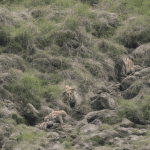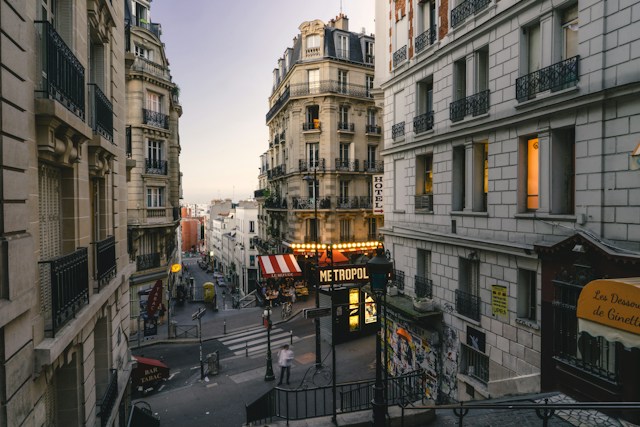Urban development continues to expand at a rapid pace, often at the expense of the natural environment. However, there is a growing recognition of the need to integrate nature into our cities. A city infused with nature not only offers aesthetic appeal but also provides a home for a variety of species, bringing the benefits of biodiversity into urban areas. This article will guide you on how to design for biodiversity in urban settings.
The Significance of Urban Biodiversity
Urban biodiversity refers to the variety of life forms within urban ecosystems, including plants, animals, and microorganisms. It is not limited to parks or green spaces, but spans the entire urban environment.
Avez-vous vu cela : How to foster local economic growth through real estate projects?
Biodiversity enriches the urban experience and contributes significantly to human well-being. It provides essential services including climate regulation, air and water purification, and soil fertility. Moreover, urban biodiversity also supports human mental health, offering residents a chance to connect with nature and experience its therapeutic benefits.
However, urbanization poses significant challenges to biodiversity. Expanding cities often encroach upon natural habitats, leading to habitat loss and species extinction. This makes the design and planning for urban biodiversity an urgent need.
Sujet a lire : How to create engaging public spaces in commercial developments?
Principles of Urban Design for Biodiversity
Designing for biodiversity entails creating urban spaces that can support a diverse range of species. This involves designing and planning in a way that maximizes the use of green spaces and incorporates native species into the urban matrix.
Connectivity is a key principle in designing for urban biodiversity. Creating green corridors that connect different habitats within a city allows species to move between different areas, enhancing their survival chances and promoting diversity.
Utilizing native species is another important strategy. Native plants are adapted to local conditions and provide ideal habitats for local wildlife. Furthermore, they require less maintenance and can better survive in the urban environment.
Human interaction with nature should also be a key consideration. Providing opportunities for residents to interact with green spaces can foster a sense of ownership and stewardship, promoting conservation efforts.
Integrating Biodiversity into Urban Planning
Integrating biodiversity into urban planning involves adopting a multi-disciplinary approach that considers ecological, social, and economic factors. It requires the collaboration of urban planners, ecologists, and residents.
One approach is to incorporate biodiversity considerations into every stage of the planning process. This includes conducting biodiversity assessments to identify and protect key habitats and species. It also involves designing urban infrastructure in a way that minimizes its impact on the natural environment.
Another strategy is to use planning tools that support biodiversity. These can include zoning regulations that preserve green spaces, incentive schemes that encourage biodiversity-friendly practices, and urban design guidelines that promote the use of native species.
Cultivating Urban Green Spaces
Urban green spaces are crucial for supporting urban biodiversity. These spaces provide habitats for a wide range of species and enhance the connectivity between different parts of the city.
Creating diverse green spaces is key. This can include parks, gardens, green roofs, and street trees. Each of these spaces can support different types of species and ecosystems.
Green spaces should also be designed to support a wide range of species. This includes providing a variety of plants to cater to different species’ needs, creating habitats such as ponds or log piles, and avoiding the use of pesticides that can harm wildlife.
Engaging Residents in Urban Biodiversity Conservation
Residents play a vital role in urban biodiversity conservation. They are the main users of urban green spaces and can contribute significantly to biodiversity-friendly practices.
One way to engage residents is through education and awareness. This can involve providing information about local biodiversity, organizing nature-based activities, and promoting the benefits of biodiversity.
Another strategy is to provide opportunities for residents to be actively involved in conservation efforts. This can include community gardening, tree planting, and citizen science projects.
In summary, designing for biodiversity in urban settings requires a shift in the way we think about urban development. It involves integrating nature into every aspect of urban design and planning, creating green spaces that support a variety of species, and engaging residents in conservation efforts. It is a challenging but rewarding task that can greatly enhance the livability of our cities and the well-being of their residents. As urbanization continues to progress, the need for biodiversity-friendly cities will only become more urgent.
The Role of Biophilic Design in Urban Biodiversity
Biophilic design is an approach that seeks to integrate nature and the built environment in a way that promotes human well-being and biodiversity. It encourages the incorporation of natural elements such as water, light, vegetation, and animals into the urban landscape. This approach is not limited to outdoor spaces but also includes indoor environments, bringing nature inside cities.
The role of biophilic design in promoting urban biodiversity cannot be overstated. It brings about a symbiotic relationship between human beings and nature, fostering a culture of coexistence. Biophilic design can be realized through the creation of green roofs, living walls, and the use of natural materials in building construction. These elements not only enhance the aesthetic appeal of urban areas but also provide habitats for various species, contributing to biodiversity.
Biophilic design also supports the ecosystem services provided by urban biodiversity. These services include air and water purification, climate regulation, and the provision of food and medicine. Moreover, biophilic design also promotes human health and well-being by providing opportunities for interaction with nature, reducing stress levels, and promoting physical activity.
The successful implementation of biophilic design requires a multi-disciplinary approach involving urban planners, architects, landscape designers, ecologists, and the community. It calls for innovative design solutions that strike a balance between urban development and biodiversity conservation.
The Role of Green Infrastructure in Urban Biodiversity
Green infrastructure refers to the network of green spaces and natural areas in urban settings that provide essential ecosystem services. These spaces, which include parks, gardens, green roofs, wetlands, and street trees, play a significant role in supporting urban biodiversity.
Green infrastructure offers numerous benefits for urban biodiversity. It provides a habitat for various species, enhancing the urban ecosystem. Furthermore, it enhances connectivity between natural areas within the city, allowing species to move freely and increasing their survival chances. Green infrastructure also mitigates the negative impacts of urbanization such as habitat fragmentation and pollution.
In addition to supporting biodiversity, green infrastructure provides a range of ecosystem services. These include air and water purification, climate regulation, and flood control. It also offers recreational opportunities for urban residents and enhances the aesthetic appeal of cities.
Integrating green infrastructure into urban planning design requires a multi-disciplinary approach that takes into account ecological, social, and economic aspects. It involves the collaboration of urban planners, ecologists, landscape designers, and the community. Planning tools such as zoning regulations, incentive schemes, and urban design guidelines can be used to promote the integration of green infrastructure into urban development.
Conclusion
Designing for biodiversity in urban settings is a complex but rewarding task that can greatly improve the quality of life for urban residents. It requires a fundamental shift in the way we approach urban development, putting nature at the heart of design and planning. By embracing principles such as connectivity, use of native species, and human interaction with nature, we can create biophilic cities that are vibrant, sustainable, and rich in biodiversity.
The roles of biophilic design and green infrastructure are central in this endeavor, providing crucial habitats for various species and offering ecosystem services that support human well-being and biodiversity conservation. By engaging residents in conservation efforts and educating them on the value of biodiversity, we can foster a sense of ownership and stewardship towards nature.
As we continue to urbanize, the need to design our cities with biodiversity in mind becomes more pressing. The task at hand is challenging, but the potential benefits – healthier and more sustainable cities that thrive in harmony with nature – make it a challenge worth embracing. Let us, therefore, strive to become better stewards of our urban ecosystem, and in so doing, ensure a better future for generations to come.











